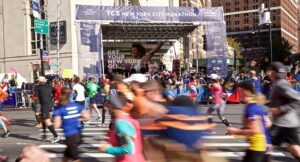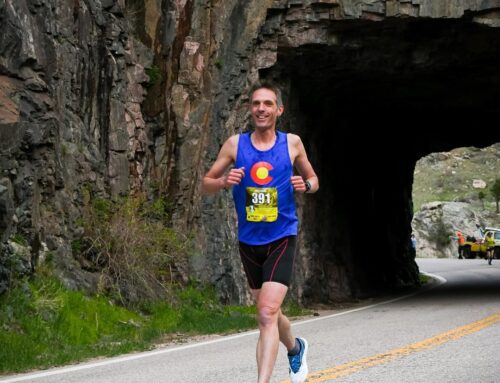The “NYC Marathon Trap” is widely understood but generally overlooked on race day for a number of reasons which we’ll explore below. The “Trap,” if you will, applies to any running race not managed properly but it’s deeper and more common during the marathon. The New York City Marathon is even more unique in how it magnifies the factors that lead to it.

What Is The NYC Marathon Trap?
Runners can fall into a trap in any race (even as short as a 100m dash…yes there is pacing associated with sprinting too!) The Trap is simply going out too fast for your ability, slowing down progressively over the course of the race and underachieving based on your current fitness.
Factors That Lead To It
- Adrenaline rush at the start
- Poor pacing/lack of focus on the task at hand
- Course conditions and lack of preparation for those conditions
- Not adjusting for weather conditions
- Overestimating fitness
The NYC Marathon Is Unique
Some will argue the Boston Marathon is the pinnacle of all marathon experiences because of the prestige and crowd support but there’s nothing like the adrenaline rush at the start of New York. Lining up with the massive Verrazano Bridge in your face and the Manhattan skyline in the distance is absolutely incredible. As you’re looking at that impressive skyline you know the entire city is awaiting your arrival. This creates a serious adrenaline rush which can lead to paces feeling easier than normal and wasting energy.
The first mile of the NYC Marathon is uphill and there’s nothing like a hill to warm-up your muscles quickly. Then, when you get to the crest of the Verrazano you literally run one mile straight downhill. So, imagine running the first mile uphill too fast because of adrenaline and then you’re super warmed up and carrying that momentum downhill. When you come off the downhill the course rises again as you prepare to enter a wall of sound along 4th Ave. The adrenaline rush continues and you carry that downhill momentum and faster pacing along a fairly flat/fast straightaway for 5.5 miles. Keep in mind that once you get locked into a rhythm for that long it’s very hard to downshift.
Ok, so we’ve covered adrenaline and poor pacing but part of the Trap is that most runners aren’t acknowledging what’s happening in their body and how the course and atmosphere are leading them into it. They’re not focusing on the task at hand, they’re going with the flow of the race because they feel good. This can be prevented with better visualization leading up to the race. Stay focused out there!
In general, if you analyze the NYC Marathon course or if you’ve run it, you know well the second half is much harder than the first. When running 26.2 miles the second half is generally going to be harder no matter what, but when the course itself is harder this presents a serious trap. Now combine the adrenaline factors and poor pacing early and you have a recipe for major “bonking” late in the race. We always say to our runners, “you have to train for the course, not just the distance.” Not only is it important that you are prepared to run hills late in the race in New York, but that you develop a race plan for the course as well, not just 26.2 miles.
Finally, all good marathon race plans adjust for weather conditions, especially temperature [See the VDOT Calculator temp feature]. Keep in mind that ideal conditions for a marathon are lower humidity, overcast skies, and temps in the mid-to-high 40’s. If you feel confident you’re trained to average 8 min miles in your race but the temp is scheduled to be 65F you better adjust your pace or you will fall further into the Trap.
When running a marathon, even in ideal conditions, you are walking a fine line trying to achieve your potential for 26.2 miles. The longer the race the more the various factors we’ve discussed will play a factor. In a marathon these factors can lead to overexertion early and then if things go south it can get exponentially bad over the course of such a long race. In New York City, if you overexert early, the second half of that course will really make you pay the price. On the big day make sure your race plan considers all of these factors, then focus on executing in the race. You’ll know you avoided the Trap when you’re scooting by your fellow competitors going up 5th Ave just after mile marker 22.
Become a faster runner using the VDOT training methodology.

